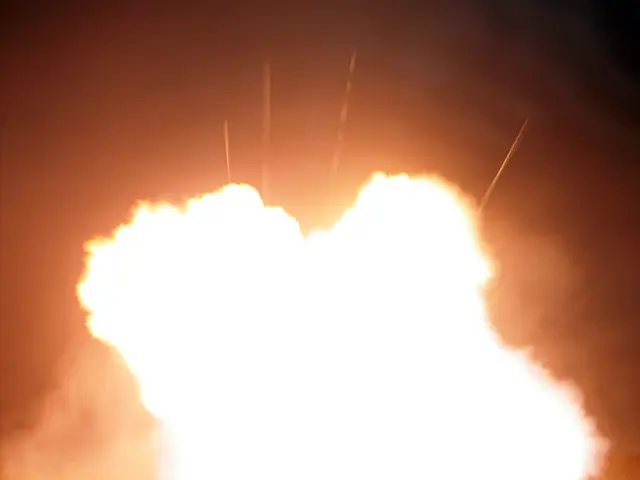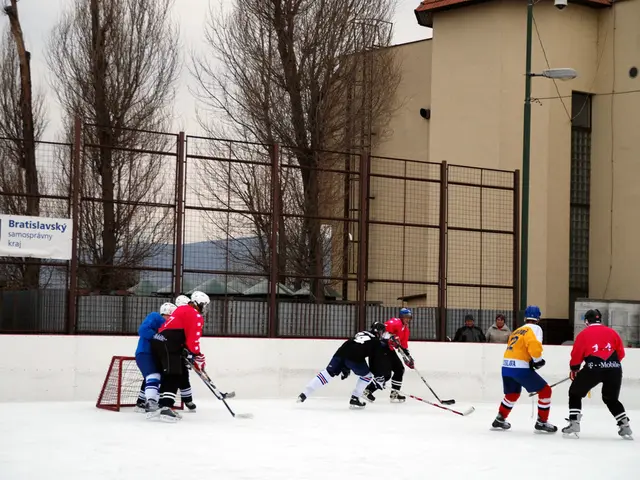Unleashing Havoc: Ukraine's Drone Onslaught on Russia
Ukraine strikes Russian weapons manufactories using Unmanned Aerial Vehicles (UAVs)
Ukraine has sparked waves of chaos across Russian territory by means of a series of unprecedented drone attacks, zeroing in on crucial military and defense industry installations, effectively paralyzing operations, setting fires, and causing widespread disruptions. Russian Defense authorities have tallied the destruction of an estimated 524 Ukrainian drones during these attacks [1][5].
Seething Consequences
- Military Quagmire: The attack crippled key airbases hosting Tu-22M3 bombers, Kh-22 cruise missiles, Su-27, and MiG-29 fighter jets. Fires to airfields like Shaikovka (Kaluga region) and Kubinka (Moscow region) indicate severe damage to aircraft parking areas and fuel depots, which could hinder Russian air operations [5].
- Industrial Backsliding: Precise drone strikes on defense plants in Saransk and Tula hit facilities pivotal for Russia’s fiber-optic military communications, missile systems, and multiple launch rocket systems (MLRS). Notably affected were the Saransk Fiber Optic Systems plant, essential for Russia's battlefield technology, and Tula facilities manufacturing anti-tank missiles and modular combat systems [3][4].
- Logistical and Operational Desolation: The widespread attacks led to the temporary shutdown of significant Russian airports, stranding countless passengers and stretching Russia’s capacity to coordinate military and civilian responses [1].
Instigating Factors
- Targeting War Infrastructure: Evidently, Ukraine is escalating its attempt to dismantle Russia’s war machine by pinpointing high-value sites deep within Russian territory, far from the frontline [3][5].
- Technological and Tactical Exascensions: Ukrainian forces have displayed an increased aptitude for conducting large-scale, coordinated drone operations, leveraging both locally produced and Western-supplied UAVs for precise strikes on military and industrial facilities [3][5].
- Psychological and Symbolic Dominance: The attacks seek to showcase Ukraine’s reach and resilience, eroding Russian domestic security perceptions and contradicting the Kremlin’s narrative of control [2][5].
Official Stances
- Russian Defense Ministry: Claims to have successfully foiled 524 Ukrainian drones, emphasizing defensive measures, but the magnitude of the attacks and observable damage at strategic facilities suggest significant operational setbacks [1].
- Ukrainian Officials: Admitted to the strikes as part of an overall strategy to undermine Russia's defense sector and military logistics. The head of the Countering Disinformation Center highlighted the targeting of plants crucial for Russia’s technological edge on the battlefield [3][5].
- International Reaction: Media coverage and OSINT channels covered the scale and brashness of the attacks, with satellite imagery confirming fires and damage at various locations [5].
Key Targets and Impacts
| Target Location | Facility Type | Impact on Russian Capabilities ||------------------------|----------------------|----------------------------------------------|| Kubinka (Moscow region) | Airfield (Su-27, MiG-29) | Fighter jet operations hit, fires || Shaikovka (Kaluga region) | Airfield (Tu-22M3, Kh-22) | Bomber/missile logistics hampered, fires || Saransk (Mordovia) | Fiber Optic Plant | Military comms systems, drone tech setback || Tula (Tula region) | Missile/MLRS Plants | Anti-tank, MLRS production capability reduced |
In Conclusion
The recent spike in Ukrainian drone attacks signals a substantial escalation in the conflict, focusing on Russia's military and industrial infrastructure to weaken its warfighting capacity, disrupt logistics, and broadcast power deep into enemy territories. These strikes are probable to accelerate technological and tactical adaptations on both sides [3][5].
- The community and employment policies of both Ukraine and Russia might need to address the potential repercussions of ongoing drone attacks on strategic infrastructure, as the conflict could lead to job losses in affected industries such as defense, communication, and aviation.
- In the midst of war-and-conflicts, political leaders in Saransk should be mindful of the disinformation circulating on WhatsApp and other platforms, ensuring the accuracy of information about the damage caused by the drone attacks and the city's response to them.
- With the proliferation of drones in military operations, the employment policy of various countries should prioritize research and development in counter-drone technologies, to maintain airspace security and prevent attacks like those on Kubinka and Shaikovka.
- In light of the ongoing conflict, general news outlets should be cautious when reporting on drone attacks in political hotspots, taking measures to verify the authenticity of information and combat the spread of disinformation, as observed in the case of the Tula and Saransk facilities.








